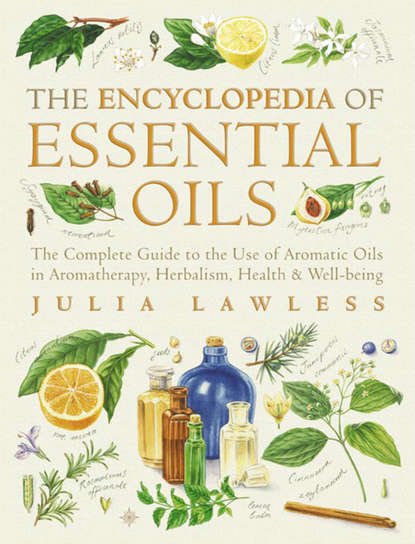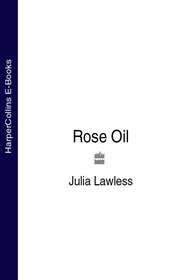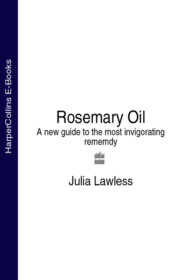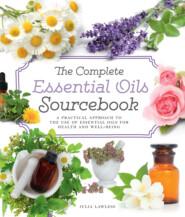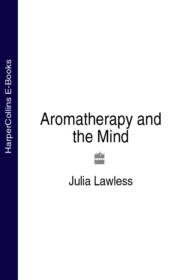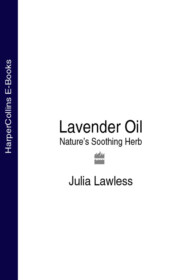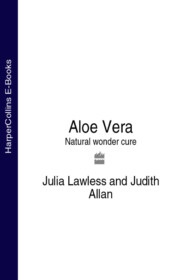По всем вопросам обращайтесь на: info@litportal.ru
(©) 2003-2024.
✖
Encyclopedia of Essential Oils: The complete guide to the use of aromatic oils in aromatherapy, herbalism, health and well-being.
Настройки чтения
Размер шрифта
Высота строк
Поля
FAMILY Asteraceae (Compositae)
SYNONYMSA. fulgens, A. sororia, leopard’s bane, wolf’s bane.
GENERAL DESCRIPTION A perennial alpine herb with a creeping underground stem, giving rise to a rosette of pale oval leaves. The flowering erect stem is up to 60 cms high, bearing a single, bright yellow, daisy-like flower. The whole plant is very difficult to cultivate.
DISTRIBUTION Native to northern and central Europe; also found growing wild in the USSR, Scandinavia and northern India. The oil is produced mainly in France, Belgium and Germany.
OTHER SPECIES A related plant, A. cordifolia, and other species of arnica are used in America, where it is known as ‘mountain tobacco’.
HERBAL/FOLK TRADITION This herb stimulates the peripheral blood supply when applied externally, and is considered one of the best remedies for bruises and sprains. It helps relieve rheumatic pain and other painful or inflammatory skin conditions, so long as the skin is not broken! It is never used internally due to toxicity levels.
ACTIONS Anti-inflammatory, stimulant, vulnerary.
EXTRACTION Essential oil by steam distillation of 1. flowers, and 2. root. The yield of essential oil is very small. An absolute, tincture and resinoid are also produced.
CHARACTERISTICS 1. A yellowy-orange liquid with a greenish-blue hint and a strong bitter-spicy scent reminiscent of radish. 2. Dark yellow or butter-brown oil more viscous than the flower oil, with a strong bitter scent.
PRINCIPAL CONSTITUENTS Thymohydroquinone dimethyl ether (80 per cent approx.), isobutyric ester of phlorol (20 per cent approx.) and other minor traces.
SAFETY DATA The essential oil is highly toxic and should never be used internally or on broken skin. However, the tincture or arnica ointment are valuable additions to the home medicine cabinet.
AROMATHERAPY/HOME USE None.
OTHER USES The tincture is mainly employed in pharmaceutical skin products. The oil from the flowers finds occasional use in herbaceous-type perfumes. It is also used to flavour certain liqueurs.
ASAFETIDA (#ulink_1201bd5f-6f85-5906-8332-ebc8d6e30476)
Ferula asa-foetida
FAMILY Apiaceae (Umbelliferae)
SYNONYMS Asafoetida, gum asafetida, devil’s dung, food of the gods, giant fennel.
GENERAL DESCRIPTION A large branching perennial herb up to 3 metres high, with a thick fleshy root system and pale yellow-green flowers.
DISTRIBUTION Native to Afghanistan, Iran and other regions of south west Asia.
OTHER SPECIES There are several other species of Ferula which yield the oleoresin known as ‘asafetida’, e.g. Tibetan asafetida, which is also used to a lesser extent in commerce.
HERBAL/FOLK TRADITION In Chinese medicine it has been used since the seventh century as a nerve stimulant in treating neurasthenia. It is also widely used in traditional Indian medicine, where it is believed to stimulate the brain. In general, it has the reputation for treating various ailments including asthma, bronchitis, convulsions, coughs, constipation, flatulence and hysteria. The foliage of the plant is used as a local vegetable. It is current in the British Herbal Pharmacopoeia as a specific for intestinal flatulent colic.
ACTIONS Antispasmodic, carminative, expectorant, hypotensive, stimulant. Animals are repelled by its odour.
EXTRACTION The oleoresin is obtained by making incisions into the root and above ground parts of the plant. The milky juice is left to leak out and harden into dark reddish lumps, before being scraped off and collected. The essential oil is then obtained from the resin by steam distillation. An absolute, resinoid and tincture are also produced.
CHARACTERISTICS A yellowy-orange oil with a bitter acrid taste and a strong, tenacious odour resembling garlic. However, beneath this odour there is a sweet, balsamic note.
PRINCIPAL CONSTITUENTS Disulphides, notably 2-butyl propenyl disulphide with monoterpenes, free ferulic acid, valeric, traces of vanillin, among others.
SAFETY DATA Available information indicates the oil to be relatively non-toxic and non-irritant. However, it has the reputation for being the most adulterated ‘drug’ on the market. Before being sold, the oleoresin is often mixed with red clay or similar substitutes.
AROMATHERAPY/HOME USE
Respiratory System: ‘There is evidence that the volatile oil is expelled through the lungs, therefore it is excellent for asthma, bronchitis, whooping cough etc.’
Nervous system: Fatigue, nervous exhaustion and stress-related conditions.
OTHER USES Now rarely used in pharmaceutical preparations; formerly used as a local stimulant for the mucous membranes. Occasionally used as a fixative and fragrance component in perfumes, especially rose bases and heavy oriental types. Employed in a wide variety of food categories, mainly condiments and sauces.
B
BALSAM, CANADIAN (#ulink_56ba9db9-453e-5304-8e4c-284afdd3c53f)
Abies balsamea
FAMILY Pinaceae
SYNONYMSA. balsamifera, Pinus balsamea, balsam fir, balsam tree, American silver fir, balm of Gilead fir, Canada turpentine (oil).
GENERAL DESCRIPTION A tall, graceful evergreen tree up to 20 metres high, with a tapering trunk and numerous branches giving the tree an overall shape of a perfect cone. It forms blisters of oleoresin (the so-called ‘balsam’) on the trunk and branches, produced from special vesicles beneath the bark. The tree does not produce a ‘true’ balsam, since it does not contain benzoic or cinnamic acid in its esters; it is really an oleoresin, being a mixture of resin and essential oil.
DISTRIBUTION Native to North America, particularly Quebec, Nova Scotia and Maine.
OTHER SPECIES The hemlock spruce (Tsuga canadensis) also yields an exudation sold under the name of ‘Canada balsam’. There are also many other species of fir which produce oils from their needles – see entry on silver fir (#litres_trial_promo) and Botanical Classification (#litres_trial_promo) section. NB: Not to be confused with the genuine balsam of Gilead (Commiphora opabalsamum), of ancient repute.
HERBAL/FOLK TRADITION The oleoresin is used extensively by the American Indians for ritual purposes and as an external treatment for burns, sores, cuts and to relieve heart and chest pains. It is also used internally for coughs.
ACTIONS Antiseptic (genito-urinary, pulmonary), antitussive, astringent, cicatrisant, diuretic, expectorant, purgative, regulatory, sedative (nerve), tonic, vulnerary.
EXTRACTION 1. The oleoresin is collected by punturing vesicles in the bark. 2. An essential oil is produced by steam distillation from the oleoresin, known as Canada balsam or Canada turpentine. (An essential oil is also produced by steam distillation from the leaf or needles, known as fir needle oil.)
CHARACTERISTICS 1. The oleoresin is a thick pale yellow or green honeylike mass which dries to crystal clear varnish, with a fresh sweet balsamic, almost fruity odour. 2. A colourless mobile liquid with a sweet, soft-balsamic, pinelike scent. It blends well with pine, cedarwood, cypress, sandalwood, juniper, benzoin and other balsams.
PRINCIPAL CONSTITUENTS Consists almost entirely of monoterpenes, pinene, phellandrene, esters and alcohols.
SAFETY DATA Generally non-toxic, non-irritant, non-sensitizing. ‘In large doses it is purgative and may cause nausea.’
AROMATHERAPY/HOME USE
Skin Care: Burns, cuts, haemorrhoids, wounds.
Respiratory System: Asthma, bronchitis, catarrh, chronic coughs, sore throat.
Genito-Urinary System: Cystitis, genito-urinary infections.
Nervous System: Depression, nervous tension, stress-related conditions – described as ‘appeasing, sedative, elevating, grounding, opening’.
OTHER USES The oil from the oleoresin is used in certain ointments and creams as an antiseptic and treatment for haemorrhoids. Used in dentistry as an ingredient in root canal sealers. Also used as a fixative or fragrance component in soaps, detergents, cosmetics and perfurmes. There is some low-level use in food products, alcoholic and soft drinks. The oleoresin is used as a medium in microscopy and as a cement in glassware.





